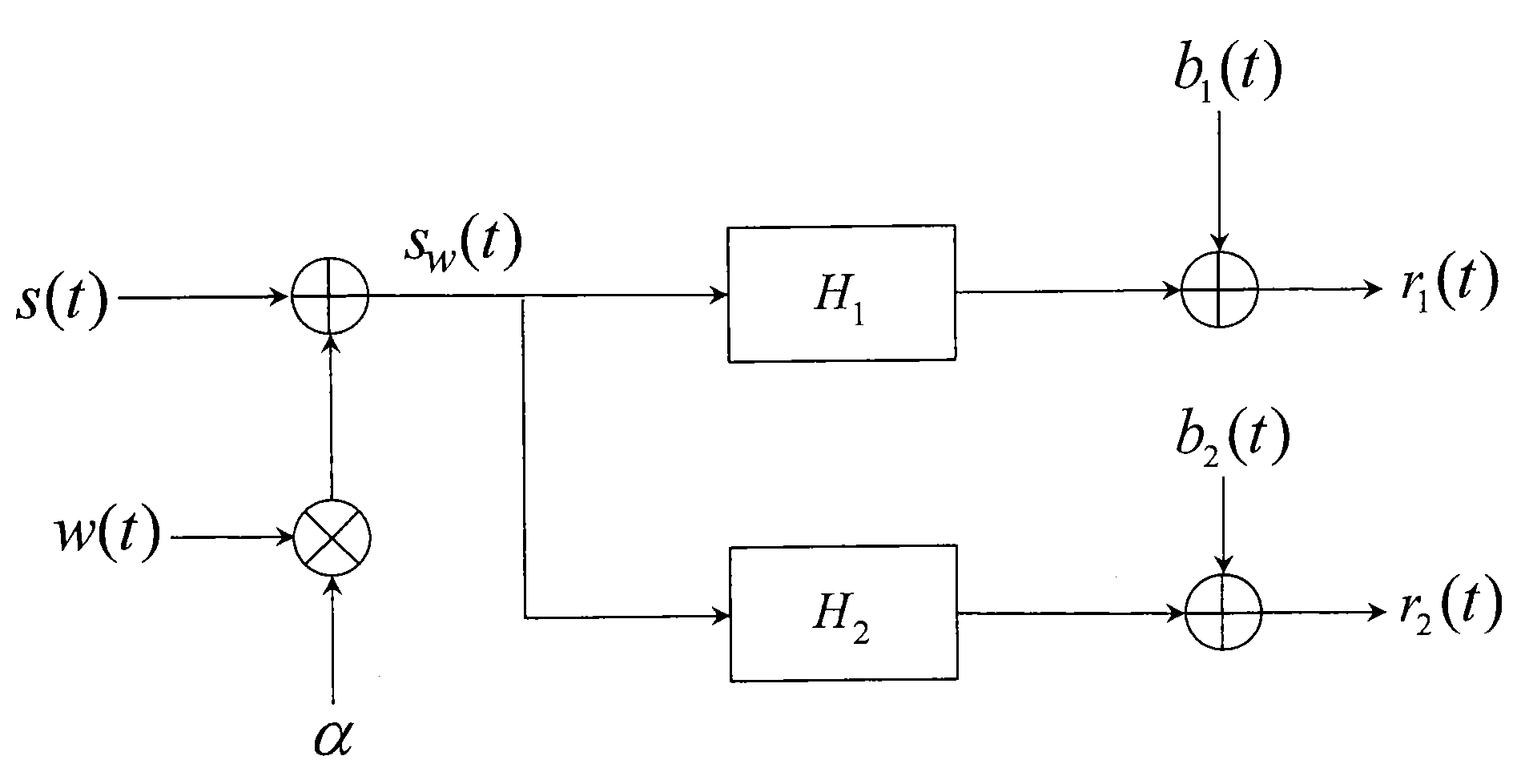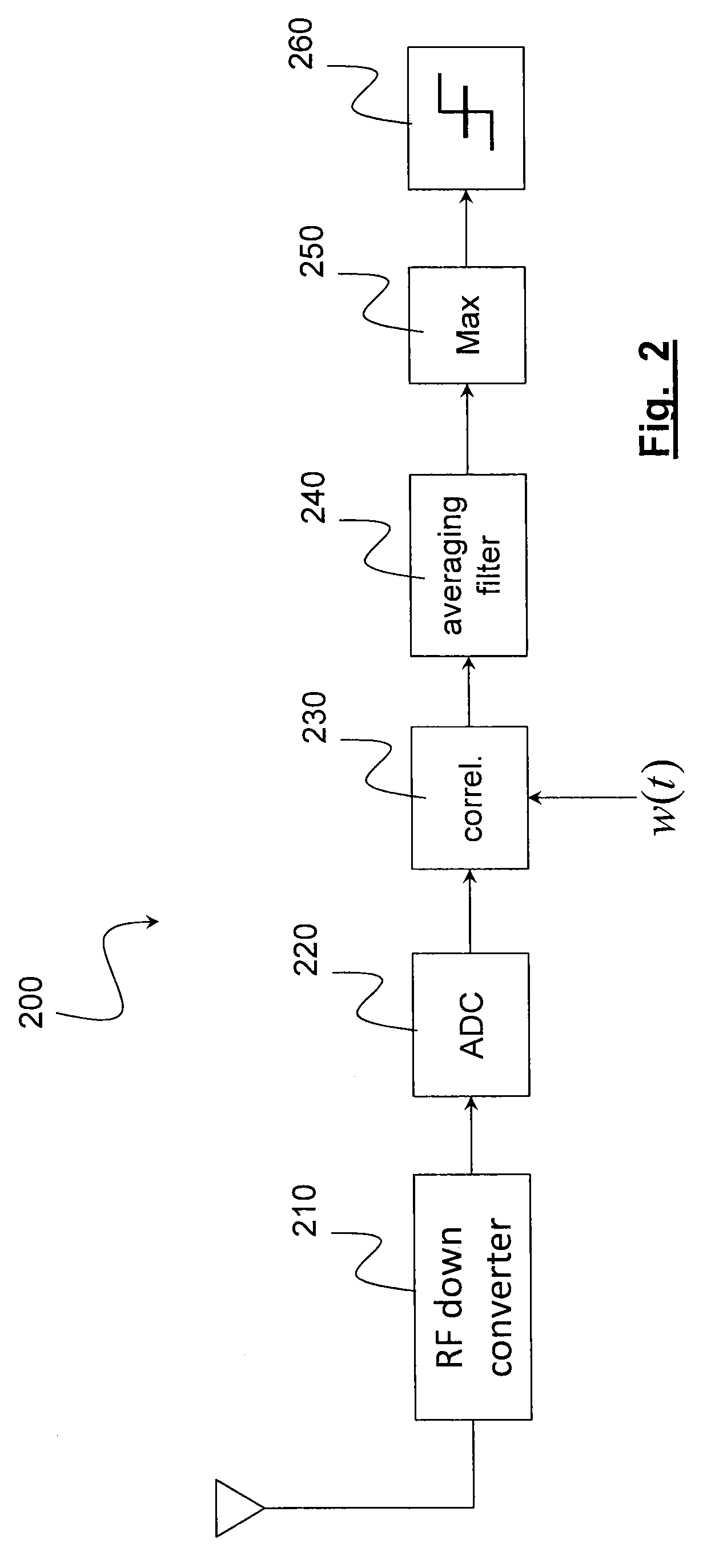Method for identifying and detecting a radio signal for a cognitive communication system
a cognitive communication and radio signal technology, applied in the field of radio systems, can solve problems such as reducing spectral efficiency and consuming precious resources
- Summary
- Abstract
- Description
- Claims
- Application Information
AI Technical Summary
Benefits of technology
Problems solved by technology
Method used
Image
Examples
first embodiment
[0016] the digital signature is a Gold code.
second embodiment
[0017] the digital signature is a Hadamard code.
[0018]According to a first variant the digital modulation is a multi-carrier modulation.
[0019]According to a second variant the digital modulation is a single-carrier modulation.
[0020]The present invention also relates to a cognitive radio system, of an RF signal identified using the previous identification method, in which:[0021]the RF signal is transposed to baseband obtain an analog baseband signal;[0022]an analog-digital conversion of the analog-digital baseband signal is performed to obtain a digital signal;[0023]the digital signal is correlated with a predetermined digital signature to obtain a correlation value;[0024]the said correlation value is compared to a threshold value; and[0025]it is decided that the said RF signal is present if the said correlation value is greater than the threshold value, and that it is absent in the contrary case.
[0026]Correlation values are advantageously obtained for multiple successive correlation...
PUM
 Login to View More
Login to View More Abstract
Description
Claims
Application Information
 Login to View More
Login to View More - R&D
- Intellectual Property
- Life Sciences
- Materials
- Tech Scout
- Unparalleled Data Quality
- Higher Quality Content
- 60% Fewer Hallucinations
Browse by: Latest US Patents, China's latest patents, Technical Efficacy Thesaurus, Application Domain, Technology Topic, Popular Technical Reports.
© 2025 PatSnap. All rights reserved.Legal|Privacy policy|Modern Slavery Act Transparency Statement|Sitemap|About US| Contact US: help@patsnap.com



